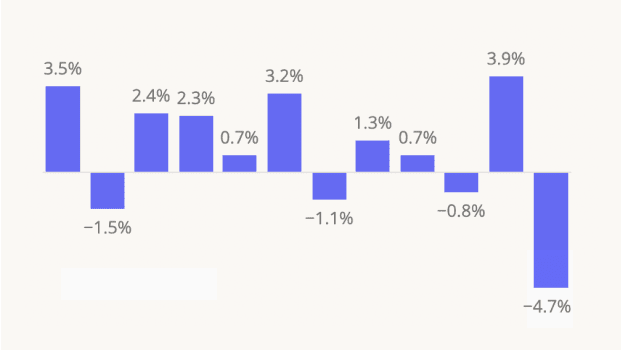Retailers and brands have often turned to limited-edition roll outs, product drops, or collaborations to drive traffic – and hopefully incremental sales. But, do these efforts still resonate with shoppers? Are these programs still as meaningful to the retail industry as they once were?
We dove into the data to see how consumers responded to recent high-profile offerings launched this spring by Trader Joe’s and Target.
Trader Joe’s Mini Tote Meets the Moment
When thinking about viral product sensations in 2025, it’s hard not to include the mini tote bag from Trader Joe’s. First released in February 2024 and then again September to fan frenzy, the original bags came in bold, classic colorways like red, yellow, blue and green. This spring, Trader Joe’s changed things up with a pastel-handled version – and once again, consumers couldn’t shop the bags fast enough.
The new mini totes debuted in-store on Tuesday, April 8th, 2025, and foot traffic estimates indicate a highly successful launch. Visits to Trader Joe’s were up 21.2% on launch day compared to a year-to-date Tuesday average, making it the busiest Tuesday of the year so far. Foot traffic also outpaced the mini totes’ second run on September 18th by 13.7%. Clearly, mini totes are the key to Trader Joe’s fanatics’ hearts.
The success of the program may stem in part from Trader Joe’s strong appeal to consumer segments heavily influenced by social media. In April 2025, the chain saw a higher penetration among “Educated Urbanites” and “Young Professionals” compared to the wider grocery industry – two groups that would be heavily clued into viral product trends.
Kate Spade Brings Varying Degrees of Success to Target
Another high-profile product drop this April was Target’s Kate Spade collection, featuring women’s apparel, shoes, accessories, and home goods.
On the surface, Kate Spade seems a perfect fit for Target – the two brands share remarkably similar visitor profiles, primarily attracting affluent, suburban families. Both brands also place a strong emphasis on discretionary offerings – and the overlap in aesthetic and consumer preferences makes sense in today’s retail market.
However, in-store visitation on launch day (Saturday, April 12th) was down 6.8% compared to the release day of 2024’s collaboration with designer Diane Von Furstenberg and down 3.0% compared to the launch day of 2023’s collaboration with Agua Bendita, Rhode, and Fe Noel. Still, traffic was up 14.1% compared to the 2018 Hunter release. And the collection also debuted on Target.com at midnight PST the same day, so in-store traffic may not reflect overall demand.
One positive takeaway from the collaboration? Its ability to draw back affluent suburban shoppers – a key Target audience. In April 2025, the median household income (HHI) of Target’s captured market experienced a minor but significant bump – up to $86.4K, compared to $85.9K in March 2025 and $85.7K in April 2024.
Future of Collaborations
Today’s shoppers are in the driver’s seat when it comes to setting trends, and retailers spend more time courting them than positioning themselves as authorities on what’s “cool.” Against this backdrop, retailers and brands are constantly vying for the next big viral sensation – or for those products or collections that become must-shop phenomena.
As retailers grapple with how to provide value to consumers amidst economic uncertainty, these offerings provide a new incentive for shoppers to visit that isn’t solely focused on price. Consumers may indeed perceive limited runs to be higher quality, more valuable or worth the extra investment. The concept of manufactured scarcity isn’t new in retail, but it continues to take on new forms as the consumer and industry evolve. We may reach a point where exclusivity and scarcity no longer move the needle for retailers, but that doesn’t seem likely in 2025.
Follow The Anchor for more data-driven retail insights.




.svg)





.png)
.png)

.png)
.png)







.avif)

